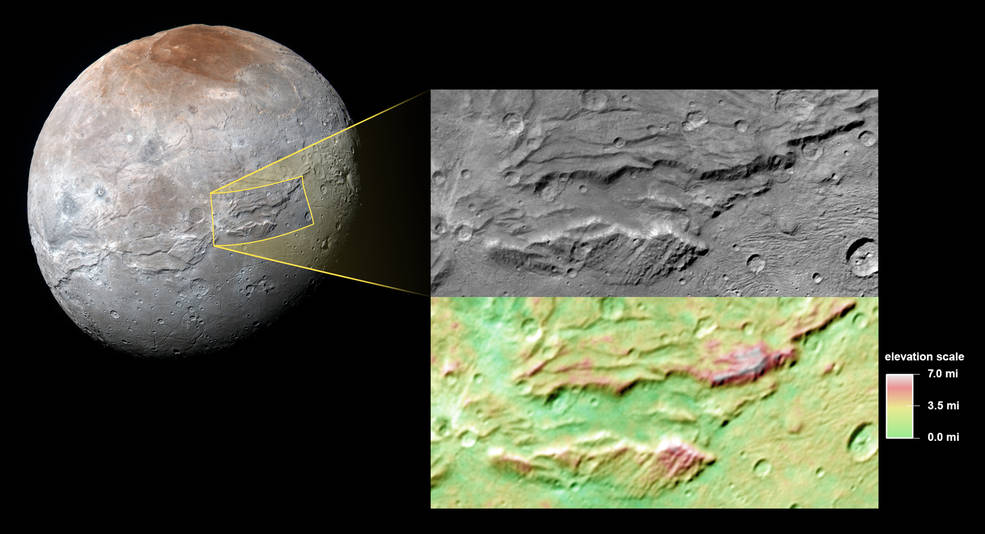Data provided by NASA’s New Horizons spacecraft suggests Pluto’s moon Charon once had a subsurface ocean. The key here is in the past tense. So what happened to make this ocean disappear? Well, scientists believe the ocean eventually froze, expanded and then burst through Charon’s surface, creating the fractured appearance of the moon today.
I wish I was there to see that.
The image above points to a particular point of interest, known as Serenity Chasma, which is part of an equatorial belt of chasms on Charon. NASA likens the moon’s geological past to Bruce Banner turning into the Hulk and tearing off his shirt.
NASA further explained Charon’s complex tectonic past.
Scientists say Charon could have been warm enough to cause the water ice to melt deep down, creating a subsurface ocean. But as Charon cooled over time, this ocean would have frozen and expanded (as happens when water freezes), lifting the outermost layers of the moon and producing the massive chasms we see today.
Serenity Chasma is an estimated 1,100 miles long and 4.5 miles deep, which absolutely trumps the Grand Canyon. For comparison, the National Park is only 277 miles long and just over a mile deep.
More space!
-
Amazing Pluto image reveals massive icy mountains
NASA on Wednesday released the first high resolution close-up image of Pluto, revealing a small region of massive icy mountains. It is, in a word, stunning. And it’s getting a lot of interesting reactions from the scientific community, not only about…
-
Experience what it would be like to fly by Pluto in this amazing video
NASA’s New Horizons provided some phenomenal photos of Pluto last month, and there’s still plenty more information to come from the industrious spacecraft. But until that information is beamed back over the next several months, why not ride shotgun and…
-
Gorgeous images reveal Pluto’s “snakeskin” surface
NASA’s New Horizons spacecraft continues to amaze with a handful of new photos that provide us with an incredibly detailed look at Pluto’s “snakeskin” surface. The spacecraft made its closest approach to the dwarf planet all the way back on July 14,…
-
NASA discovers “floating hills” on Pluto
NASA on Thursday revealed another amazing Pluto factoid: the planet appears to have floating hills, or icebergs. The agency said the icebergs are floating in a vast sea of frozen nitrogen at Sputnik Planum, which rests within the planet’s “heart.”…


















